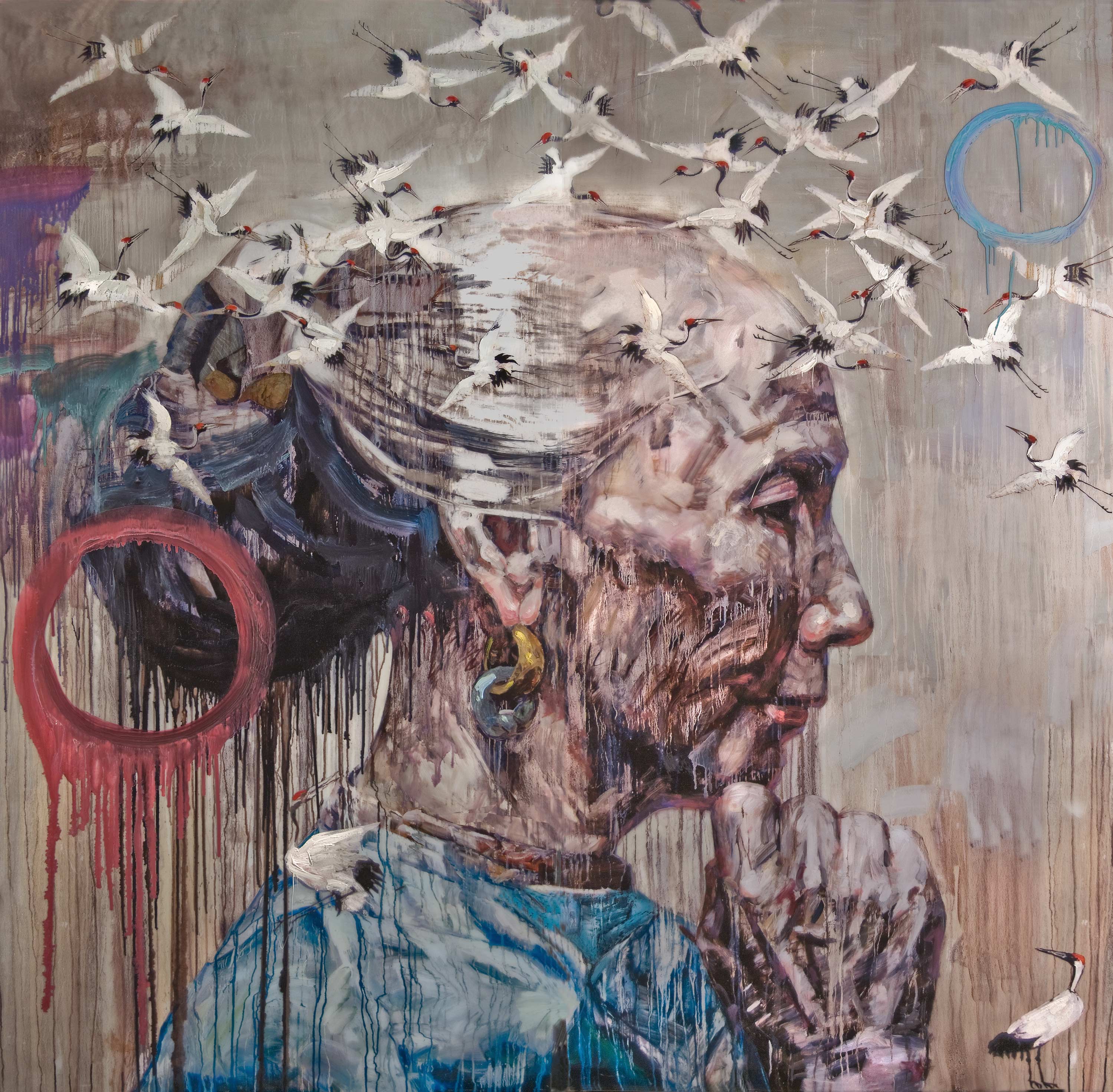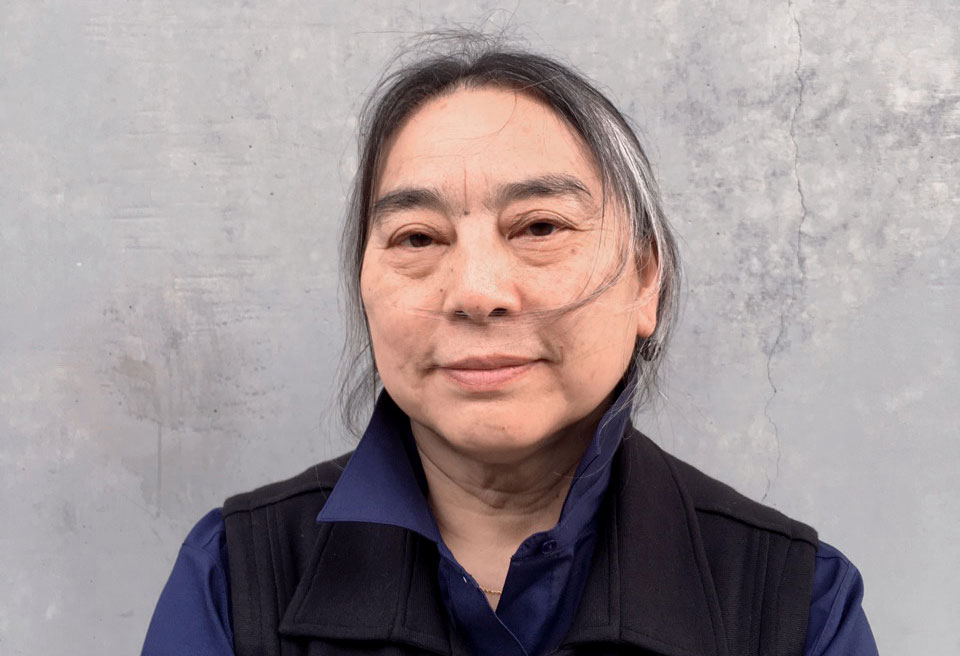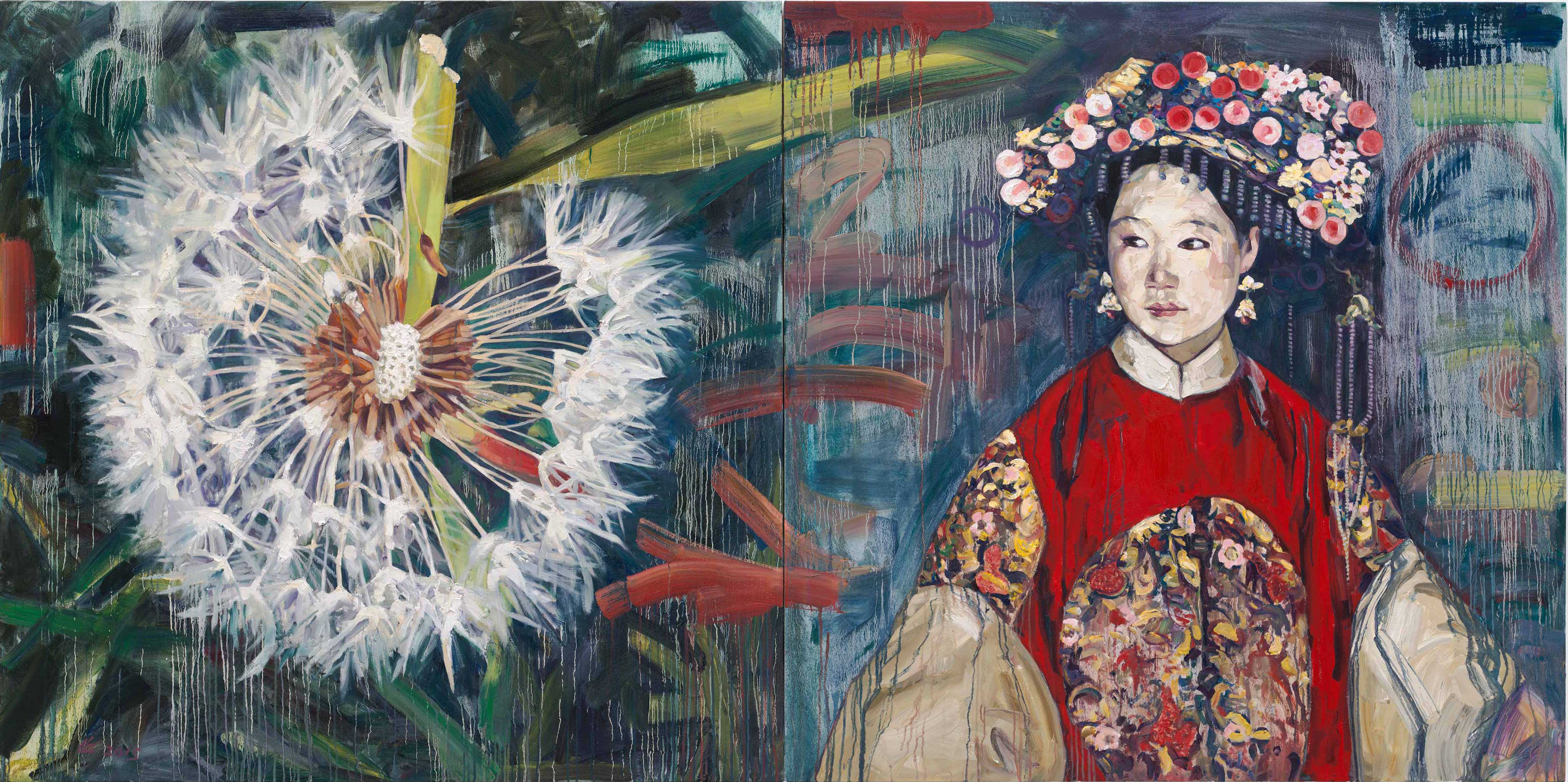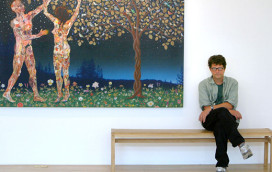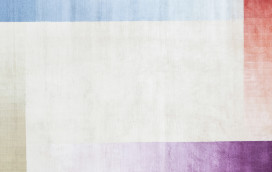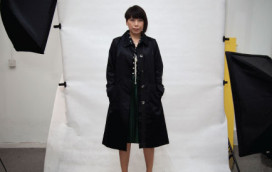In a visionary body of work, rich in symbolism and pathos, California-based artist Hung Liu connects history to the present, East to West, mundanity to beauty. Dripping with immediacy, as if the artist has just put down the brush, her paintings of anonymous figures adapted from historical photographs are timeless, yet paradoxically anchored to the past, infused with a nuanced narrative and layers of psychological insight.
Born in China in 1948, Liu came of age during the Cultural Revolution. After high school, she was sent to the countryside where she spent four years working in the fields. There, she photographed and drew workers and their families. This was a formative experience for the young artist, who went on to portray ordinary people as the subjects of much of her work.
Following her early studies as a mural painter at the Central Academy of Fine Arts, one of China’s leading art schools, in 1984 Liu emigrated to America to pursue a graduate program in visual arts at the University of California San Diego. Today, from her hometown of Oakland in California, she re-contextualizes snippets of history that may not be lost, but have perhaps been forgotten. “I’ve come to think of these subjects as ghosts I ‘summon’ from the grainy, chemical surfaces of the photographic past,” she says. “That’s kind of going backwards technologically, from a newer medium to an older one, but mineral pigments on canvas can be very physical, bringing the image forward into the present in a vivid, present-tense way. There’s some kind of alchemy here, although I think of myself less as an advocate or guardian, more as a witch.”
On a visit to China in 1991, Liu found a treasure trove of studio photographs of 19th-century Chinese prostitutes, which became references for a series of riveting multimedia works. A series called Dandelions, meanwhile, is based on photographs she took on a road trip, the flowers often blown up to the size of the human figure. And the subjects of American Exodus, on show this fall at the Nancy Hoffman Gallery in New York City, are based on images of migrants from America’s Depression era that she found in the Dorothea Lange archive at the Oakland Museum of California.
In a Wall Street Journal review of her 2013 Oakland Museum of California retrospective, Summoning Ghosts: The Art of Hung Liu, critic David Littlejohn referred to Hung Liu as “the greatest Chinese painter in the U.S.”. Her art, which is represented in the permanent collection of The Metropolitan Museum of Art in New York, not only mirrors the unique duality of her extraordinary life experience, straddling two cultures, but transcends the boundaries of time.
Hung Liu: American Exodus is showing at the Nancy Hoffman Gallery in New York City until October 22, 2016
Your address: The St. Regis New York
Crane Dance, 2011
The delicate cloud of circling cranes in this work has a profound underlying significance. “In China, cranes are considered auspicious, and are associated with the imperial palace and heaven,” says Hung Liu (below). “This woman is from a photo, circa 1865, by the American John Thompson. The juxtaposition of her hand with the cranes suggests the vast space between the imperial court and working peasants.”
Dandelion 11, 2015
“The woman and the flower are both ornamental, but the dandelion is mostly blown away. It suggests to me the unpredictable course of one’s life, no matter how ornamented one is,” says Liu.
